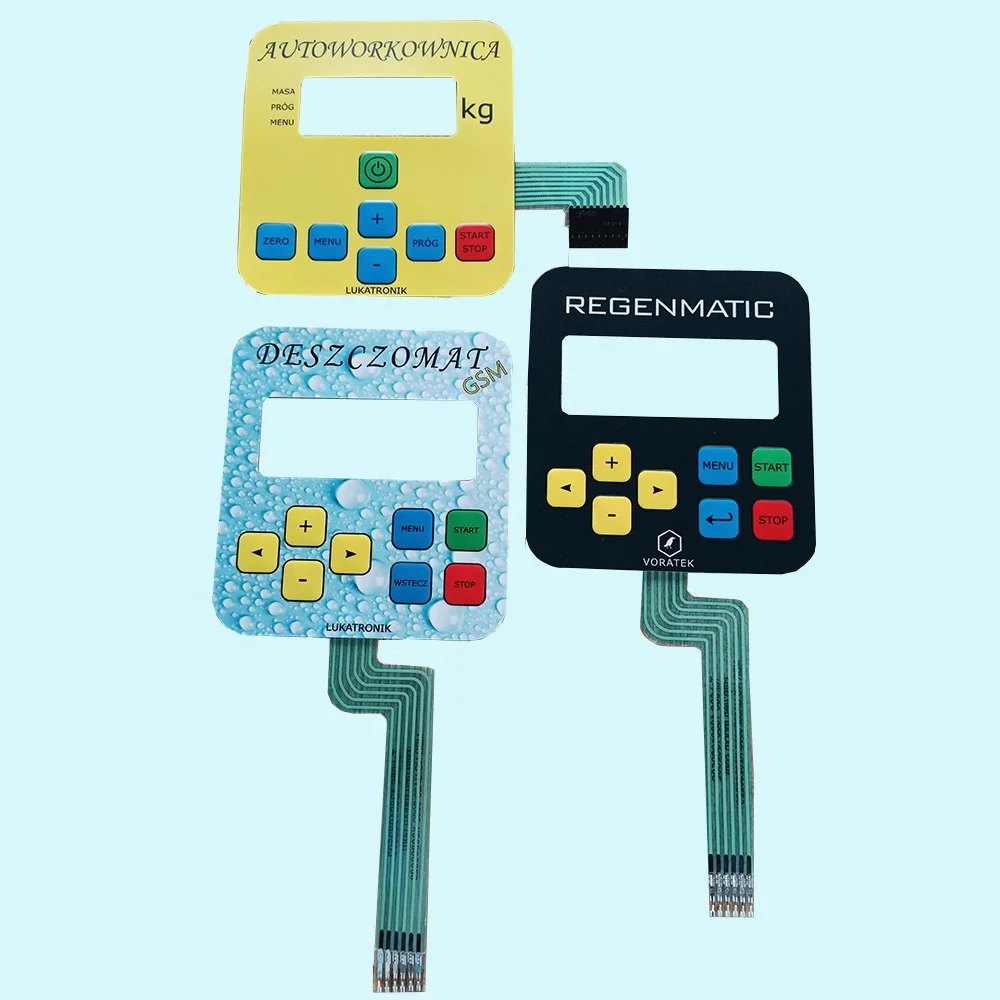Understanding Membrane Layer Switches Over: The Trick to Trusted and resilient Controls

What Are Membrane Layer Buttons?
Membrane buttons are an innovative option in the realm of interface modern technology, combining capability and layout flawlessly. These gadgets act as a user interface in between users and electronic systems, incorporating a number of components right into a compact layout. Generally constructed from versatile, slim layers of materials, membrane layer buttons are made to react to touch, enabling individuals to engage with machinery and digital tools successfully.
The main aspects of a membrane button include a printed circuit layer, graphic overlay, and a spacer layer that prevents unintended activation. The visuals overlay can be customized to reflect brand name identification or individual preferences, enhancing appearances while guaranteeing usability. Membrane layer buttons are typically utilized in various applications, consisting of clinical gadgets, consumer electronics, and commercial tools, owing to their toughness and resistance to ecological factors such as dampness and dust.
Among the essential benefits of membrane switches is their capability to stand up to deterioration, making them perfect for high-traffic settings. Furthermore, they are lightweight and call for very little space, enabling ingenious layouts in product growth. Generally, membrane changes represent a sensible and effective option for modern digital user interfaces, weding innovation with user-centric design principles.
How Membrane Switches Work
The procedure of membrane switches hinges on a basic yet efficient device that translates individual input into digital signals. When a customer presses the button, the leading layer flaws, allowing a conductive element in the circuit layer to make contact with a matching conductive pad on the bottom of the visuals overlay.
The style of membrane switches can differ, yet they commonly include domes or tactile elements to offer comments to the individual, improving the general experience - membrane switch. The products made use of in membrane switches, such as polyester or polycarbonate, add to their sturdiness and resistance to environmental elements, including wetness and dust. The published circuits are commonly enveloped, which secures them from wear and tear over time.
Advantages of Membrane Switches

Additionally, membrane switches are known for their longevity. Constructed from robust materials, they are resistant to dust, moisture, and physical wear, which dramatically expands their life-span contrasted to typical mechanical switches. This durability makes them particularly suitable for high-traffic environments and applications calling for longevity.
An additional considerable benefit is the convenience of cleansing and upkeep. The smooth surface of membrane changes reduces dirt accumulation and is usually invulnerable to spills, making them optimal for setups that require constant sanitization.
Furthermore, membrane switches use a streamlined account, causing a thinner style that can be integrated into different devices without adding bulk. This feature not just improves the aesthetic allure however also adds to a much more ergonomic product design.
Applications of Membrane Buttons
User-friendly and flexible, membrane buttons find applications throughout a large range of markets, including medical tools, customer electronic devices, and industrial tools. In the medical field, these buttons are indispensable visit homepage to tools such as analysis devices, person surveillance systems, and infusion pumps, where integrity and simplicity of cleaning are critical. Their capability to keep and stand up to harsh environments functionality makes them optimal for such applications.

In customer electronic devices, membrane layer buttons are used in products like microwaves, cleaning machines, and remotes - membrane switch. Their streamlined style enables instinctive interface, improving the overall customer experience while providing sturdiness and resistance to damage
Commercial tools likewise takes advantage of membrane layer buttons, particularly in control panels for equipment and automation systems. These buttons use defense against dirt and dampness, making certain regular efficiency in difficult settings. Their personalized attributes allow producers to tailor them to details operational demands, improving efficiency pop over to this site and capability.
Choosing the Right Membrane Switch
When choosing a membrane button, it is necessary to take into consideration various aspects that influence performance and viability for certain applications. The key considerations consist of environmental conditions, responsive responses, sturdiness, and layout specifications.
First, evaluate the operating atmosphere; buttons subjected to wetness, chemicals, or severe temperatures call for particular products to ensure durability and performance. Next off, assess the demand for responsive feedback. Depending on customer communication, some applications may gain from a responsive reaction to confirm activation, while others might favor a non-tactile design for visual factors.
Toughness is another important factor; membrane layer buttons need to be developed to withstand regular use, effects, and abrasion. Guarantee the chosen switch can sustain the expected lifecycle, specifically in high-usage circumstances.

Final Thought
To conclude, membrane layer changes serve as essential elements in the layout of trustworthy and long lasting control systems throughout various industries. Their portable style, integrated with robust construction and customizable attributes, boosts individual communication while making sure long life sought after environments. The flexibility of membrane layer switches permits for tailored remedies that meet certain functional requirements, reinforcing their value in contemporary innovation. As industries proceed to advance, the importance of integrating effective membrane switch solutions can not be overemphasized.
Membrane changes represent a crucial element of contemporary interface style, mixing performance with durability in various applications.Membrane layer buttons are an innovative remedy in the world of user interface innovation, integrating capability and why not try these out layout perfectly. Commonly created from versatile, thin layers of products, membrane buttons are developed to react to touch, enabling individuals to connect with equipment and electronic gadgets effectively.
The design of membrane switches can vary, yet they frequently incorporate domes or tactile elements to offer feedback to the customer, boosting the general experience.In conclusion, membrane layer changes offer as necessary parts in the layout of long lasting and reputable control systems throughout various sectors.